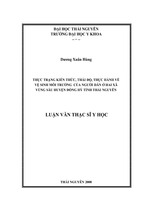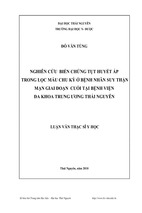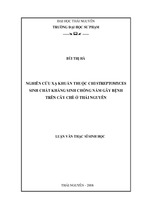Screening Embodiment:
Let’s Play Video and Observable Play Experiences
A thesis submitted in fulfilment of the requirements
for the degree of Masters of Design (Media and Communication)
Zhia Zariko
BA (Hons) UniSA
School of Media and Communication
College of Design and Social Context
RMIT University
May, 2016
2
Declaration
I certify that except where due acknowledgement has been made, the work is that of the author
alone; the work has not been submitted previously, in whole or in part, to qualify for any other academic
award; the content of the thesis is the result of work which has been carried out since the official
commencement date of the approved research program; any editorial work, paid or unpaid, carried out by
a third party is acknowledged; and, ethics procedures and guidelines have been followed.
Zhia Zariko
23 May 2016
3
Acknowledgements
Firstly, I would like to thank my supervisors, Larissa Hjorth and Emma Witkowski, for
their infinite patience, calm reassurance, invaluable advice, guidance, and most of all their quiet
confidence in me, even when I had none in myself. I feel privileged to have known you, and
honoured to have been mentored by you. You were a calm port in a chaotic storm and I will be
eternally grateful for everything you have done for me. I cannot ever repay the opportunity you
have afforded me, and the lessons you have left me with. I only wish I had done better.
I also wish to thank Christian McCrea for sage words of advice when I needed them
most, and reassurance when I needed it even more. To Tanya Lewis, whose detailed feedback
was a lifesaver in more ways than one. The collective support and attention I was given by RMIT
faculty members will forever impress and elevate me. I was also afforded a second chance that I
did not know I could have, and I must thank Craig Batty, Tanya, Emma, and Larissa for
affording it to me. A special thanks must be given to Corliss Mui Suet Chan, who pulled me out
of many a fire I didn’t even know was going on.
To my mother, who lost her daughter for a couple of Christmases, who was only a phone
call away, who always drove me to strive bigger and higher, providing a soft landing for those
times that I inevitably fell. You are the reason I am here and I am sorry for the grey hairs and
missed texts.
To my partner, who cared for me through long nights of insecurity and doubt, providing
both comfort and tough love. You bore the brunt of my tired frustration with saint-worthy calm
and understanding. Thank you for doing the dishes. To my old housemate, who told me to suck it
up and keep working and who made sure I was eating.
4
Finally, to my partner’s dog, he will never understand how valuable those 3 am sessions
of ball were, and just wanted me to throw it already.
5
Contents
Acknowledgements ............................................................................................................. 4
Abstract ............................................................................................................................... 9
Figures............................................................................................................................... 11
Introduction: ...................................................................................................................... 14
Let’s Play Videos and the Videogame Play Experiences-as-experienced ........................ 14
Chapter summary .......................................................................................................... 24
Chapter One: ..................................................................................................................... 29
Let’s Play, Embodiment, and Literature ........................................................................... 29
Introduction ................................................................................................................... 29
Positioning the Research ............................................................................................... 30
Let’s Play—a cultural shift in gaming .......................................................................... 34
Let’s Play Videos, YouTube, and Web 2.0 .................................................................. 36
Phenomenological embodiment—the gestalt of player and game ................................ 46
Conclusion .................................................................................................................... 52
Chapter Two: Methodology .............................................................................................. 55
Introduction ................................................................................................................... 55
The Channels ................................................................................................................ 56
Markiplier ................................................................................................................. 57
ChristopherOdd ......................................................................................................... 59
6
Alien: Isolation and Outlast .......................................................................................... 62
Let’s Play Videos—framing the game for the audience ............................................... 69
Let’s Play and Survival-Horror ..................................................................................... 72
Let’s Play Videos as Narrative ..................................................................................... 79
Conclusion .................................................................................................................... 81
Chapter Three: Alien: Isolation and Observable Videogame Play Experiences .............. 83
Introduction ................................................................................................................... 83
Learning to Fear ............................................................................................................ 84
Comparative Expressions of Fear ................................................................................. 97
The Flamethrower and Adaptive AI ........................................................................... 108
Conclusion .................................................................................................................. 120
Chapter Four: Reflexive Narrative and Outlast .............................................................. 122
Introduction ................................................................................................................. 122
Self-Evaluative Play.................................................................................................... 123
Avatars and Agency .................................................................................................... 133
Videogame Play Experience as Authorship ................................................................ 141
Conclusion .................................................................................................................. 150
Conclusion: ..................................................................................................................... 152
Let’s Play Videos and Videogame Play Experiences -as-Experienced ........... 152
The Story Thus Far ..................................................................................................... 152
7
Methods Reflections ................................................................................................... 157
Let’s Play Videos: Playing with play.......................................................................... 159
In finis ......................................................................................................................... 161
Bibliography ................................................................................................................... 162
Game References ........................................................................................................ 182
Appendix of videos ......................................................................................................... 184
Markiplier ................................................................................................................... 184
Christopher Odd .......................................................................................................... 188
8
Abstract
Let’s Play videos are the practice whereby a videogame player records their experience to
share with a future audience. They are an emergent form of cultural activity that has been
relatively overlooked within the field of game studies. This thesis seeks to ask: how can access to
videogame play moments (and performativity) provide insights into the understanding the
dynamics of videogame play experience?
This thesis approaches Let’s Play videos as a way in which to expand our understandings
of videogame research. To this end, this thesis explores how footage of videogame play
experiences-as-experienced offers access to specific play experiences and, in turn, how play can
take on various forms of embodiment, gestures, affect and performance. Focusing upon a
phenomenological approach to embodiment within the context of the emotional and affective
genre of survival-horror, I utilise case studies of the Let’s Play videos created by Markiplier and
ChristopherOdd as they play the survival-horror, first-person games Alien: Isolation (Creative
Assembly 2014) and Outlast (Red Barrels 2013).
The two Let’s Play creators were chosen in part due to the size of their audience
followings. Markiplier is indicative of a more mainstream YouTube personality with several
million subscribers (over ten million), while ChristopherOdd represents a more subcultural
following (under two hundred thousand). However, importantly, in a search for ‘Let’s Play
Outlast’ on YouTube, both content creators appeared on the first page of results. Moreover, their
videos showcase two different but popular play styles—Markiplier is energetic, excitable, and
entertainment-oriented in his videos, whereas ChristopherOdd is focused on presenting the game
as the focus of the entertainment, rather than his own commentary. Both channels have their own
9
following, with an audience that creates fan art, engages with them in social media regularly, and
speaks with familiarity in their comment section, and are representational of the results of a
search on YouTube for a particular Let’s Play video series.
Unfortunately, at the time of this study (2013/2014), female player representation of both
Outlast and Alien: Isolation were difficult to find, and I could not find a channel that had both
games featured within the timeframe (this has changed within recent months). As such, the
selection process and videogames resulted in two male players. Indeed, the politics of the gender
of Let’s Players is a very important topic which undoubtedly informs the types of game play,
performativity and their affect. However, within the horror genre, male Let’s Players dominated
the genre, which, in turn, reinforces the gendered genre of horror which can be traced in film and
TV studies (Clover 1992). These gendered issues will become increasingly prevalent in future
studies into Let’s Play. My focus upon horror—as an extreme genre predicated upon eliciting
affect from the player—in this thesis is to provide preliminary research into the role embodiment
and performativity have in this emergent field of videogame play.
Throughout this thesis I treat each Let’s Play video as a contained narrative videogame
play experience, a game-story as told by the author of the narrative, the player. This form of
authorship has a unique influence and creates idiosyncratic play-story. This research serves as a
preliminary examination into what proves to be an extensive and rich form of cultural
expression, how it can assist into gaining further access to videogame play experiences-asexperienced and what that might mean for future videogame play analysis.
10
Figures
Figure 1.1 A YouTube Search of ‘ChristopherOdd Outlast’. Note the playlist at the top of the results. .....................15
Figure 1.2 Screen capture taken from VidStasX taken on 27th October 2015 (vidstatisx.com)..................................16
Figure 1.3 Markiplier playing Outlast. Note the camera image of his face in the top left corner of the screen,
highlighted in red. ........................................................................................................................................................17
Figure 2.1 A YouTube search of Leon's decapitation yields several videos that showcase it, including this one. ......31
Figure 2.2 The results of ‘Let’s Play Outlast’ search in YouTube–458, 000 .................................................................35
Figure 2.3 A screen capture taken from the YouTube blog announcing YouTube Gaming. ........................................40
Figure 2.4 A screen capture taken from the official Blizzard StarCraft twitter account voicing their support of
YouTube content creators who have found themselves losing their videos due to YouTube copyright systems. .....41
Figure 2.5 A screen capture taken from the Ubisoft official forums. ..........................................................................43
Figure 2.6 GenerikB's Let's Play channel .....................................................................................................................44
Figure 3.1 Markiplier's YouTube channel ....................................................................................................................56
Figure 3.2 A screen capture taken from Markiplier's video 'Markiplier Reacts to 8 Million Fan Reaction Video' ......59
Figure 3.3 Screen capture of ChristopherOdd from 'Livestreaming Dungeons and Dragons Right Now on
SeekandDestroy0011's Twitch Channel' ......................................................................................................................60
Figure 3.4 ChristopherOdd plays Alien: Isolation in a moment of fatal failure. ChristopherOdd Video 30 minute
12:22 ............................................................................................................................................................................64
Figure 3.5 Markiplier playing Outlast. Markiplier Video 31 minute 0:12 ....................................................................66
Figure 3.6 Markiplier video timestamp of almost an hour. Markiplier Video 12. .......................................................68
Figure 3.7 Markiplier's visible response before the hostile NPC Chris Walker tries to break through the window in
front of him. Markiplier Video 35 ( 0:32) .....................................................................................................................76
Figure 4.1 Markiplier reveals a divergent path as he enters a room in an entirely different manner to
ChristopherOdd (see Figure 18). ChristopherOdd’s location of entry is marked with the blue square (a floor vent
out of sight). Markiplier Video 6 minute 22:22 ...........................................................................................................86
11
Figure 4.2 ChristopherOdd enters the same room as Markiplier (see Figure 17). Markiplier’s point of entry is
marked in blue. ChristopherOdd’s point of entry (a hatch in the floor) is marked in red. ChristopherOdd Video 10
minute 26:33 ...............................................................................................................................................................86
Figure 4.3 ChristopherOdd uses a flare to distract the xenomorph as he passes by a doorway. ChristopherOdd
Video 9 minute 9:21 ....................................................................................................................................................88
Figure 4.4 ChristopherOdd encounters a non-hostile Working Joe. ChristopherOdd Video 5 minute 13:00 .............89
Figure 4.5 Markiplier hides beneath a gurney as the xenomorph walks past. Markiplier Video 6 minute 17:20 .......92
Figure 4.6 ChristopherOdd hides from the xenomorph in a locker. ChristopherOdd Video 27 minute 18:53 ...........93
Figure 4.7 ChristopherOdd discovers trying to run from the xenomorph results in death. Video 9 minute 1:42 ......93
Figure 4.8 ChristopherOdd tries to use the motion tracker to locate the alien. Note the glowing bar that indicates
the direction of the xenomorph. ChristopherOdd Video 28 minute 20:09 .................................................................94
Figure 4.9 Markiplier speaking directly at the audience in Video 1 minute 16:25 vs. Markiplier focusing on an ingame puzzle in Video 3 minute 14:42 and Markiplier feeling comfortable to drink on camera as the game is paused
on the menu in Video 12 minute 0:15 ........................................................................................................................99
Figure 4.10 Markiplier attracts the xenomorph to the area by sprinting, causing it to emerge from the vent (red
square), chase him and kill him. Markiplier Video 5 minute 8:14 .............................................................................100
Figure 4.11 ChristopherOdd successfully noticing the drool dripping to the floor (puddle indicated in red), and is
able to navigate successfully around the vent in which the xenomorph is waiting to ambush (indicated in blue).
ChristopherOdd Video 10 minute 27:05 ...................................................................................................................102
Figure 4.12 Markiplier prepares to throw a noisemaker to distract the xenomorph. Markiplier Video 5 minute 29:25
...................................................................................................................................................................................106
Figure 4.13 ChristopherOdd receives the flamethrower. ChristopherOdd Video 15 minute 0:49 ...........................109
Figure 4.14 Markiplier uses the flamethrower on the xenomorph (engulfed in flame). Note his calm expression.
Markiplier Video 8 minute 13:19 ...............................................................................................................................111
Figure 4.15 ChristopherOdd uses the flamethrower despite not being able to see (or hit) the xenomorph. Note the
flamethrower fuel in the bottom left corner (0/0) (Video 30 minute 13:24) ............................................................113
12
Figure 4.16 The xenomorph recoils from the flamethrower, covering its face despite the fact that it has not been
used. Markiplier Video 13 minute 55:46 ...................................................................................................................115
Figure 4.17 Markiplier is stalked by a xenomorph through the hive. The xenomorph follows him slowly, staying just
out of the reach of the flamethrower. Markiplier Video 12 minute 1:54 .................................................................115
Figure 4.18 The xenomorph attacks Markiplier despite being hit with a burst of flame. Markiplier Video 13 minute
55:53 ..........................................................................................................................................................................116
Figure 4.19 User TELVM uses YouTube as a means to provide proof for their witnessing of the xenomorph
‘learning’ how the flamethrower works. Taken from http://forums.alienisolation.com/forum/main-category/mainforum/24225-he-xenomorph-learns-to-fear-the-flamethrower ...............................................................................118
Figure 5.1 Markiplier engaging with the controls. Note the instructions on the screen, and that his facecam blocks
part of it. Video 15 minute 6:12 ................................................................................................................................126
Figure 5.2 A comparison of the darkness versus the night vision in the game. Note the HUD that appears in the
latter screencap. ChristopherOdd Video 31 minute 8:59 and 9:00 respectively. .....................................................128
Figure 5.3 Markiplier's screen frames the potential escape route. Markiplier Video 35 minute 9:50 ......................132
Figure 5.4 "Look at my hand!" minute 15:18 ............................................................................................................135
Figure 5.5 The camera is 'broken' from being dropped, distorting the corner view of the screen when a player looks
through it. Markiplier Video 25 minute 1:21 .............................................................................................................138
Figure 5.6 "Oh nice!" ChristopherOdd finds the key card for security control. Video 33 minute 10:44 ...................145
Figure 5.7 ChristopherOdd watches the sequence in which the WALRIDER kills the other, main antagonist Chris
Walker (Video 50 minute 11:21). Note that the form on the ground (Chris Walker) appears to be alone. .............148
Figure 5.8 The WALRIDER (the shadowy humanoid figure) is rendered visible by the use of night vision as seen in
ChristopherOdd Video 50 minute 11:32. ...................................................................................................................149
Figure 6.1 The playlist of Markiplier's Alien: Isolation experience-the 'play-story'. ..................................................154
Figure 6.2 The Playlists offered by ChristopherOdd, organising his Let's Play videos, an example of the sheer
amount of videos available to a researcher. .............................................................................................................159
13
Introduction:
Let’s Play Videos and the Videogame Play
Experiences-as-experienced
I sit down at my computer and type ‘ChristopherOdd Outlast’ in the YouTube search bar. The
videos I want are in a playlist at the top of the results—a chronological arrangement of the
YouTube content creator ChristopherOdd as he plays the videogame Outlast (Red Barrels 2013).
I scroll through the selection to the final video, number twelve in the list. The word ‘END’ in the
title lets me know it is to be the final one of his play sequence. Outlast is a survival-horror game
and I have difficulty playing them sometimes, due to bouts of both cowardice and a busy
schedule. A Let’s Play video allows the experience of playing the game with another. Not the
same as watching a video—I empathise with the player, with every jolt and start. I am able to
experience the game without the pressure of being in control, needing to be the one to hit ‘w’ on
the keyboard. ChristopherOdd takes me with him. Even though I am not the one playing the
game, I accompany him in his play experience. He plays the game for me.
14
Figure 1.1 A YouTube Search of ‘ChristopherOdd Outlast’. Note the playlist at the top of the results.
A Let’s Play video is a recording of a player’s videogame play experience for the purpose of
audience presentation. It is differentiated from showcasing or sharing important or entertaining
videogame play moments in that it contains the entire play experience of a videogame, usually
spanning over multiple videos. At any time, YouTube can host several hundred thousand videos
for the more popular videogames. Even games considered long out of circulation can potentially
be found hosted on YouTube. Currently, the most subscribed YouTube channel belonging to a
single person is that of PewDiePie—with over 40 million subscribers (see Figure 1.2)—whose
main genre of video are that of Let’s Play.
15
Figure 1.2 Screen capture taken from VidStasX taken on 27th October 2015 (vidstatisx.com)1
Each Let’s Play video allows access into how a player engages with a videogame. However, this
engagement also incorporates a performative engagement with the webcam and the types of
affect created when one knows one is being filmed. The audience engagement techniques are
also typically accompanied by a player’s commentary, which can be informative, comedic or
critical; whatever might reflect the game thematic, appeal, and/or game habits of the
player/creator2. As mentioned, Let’s Play videos can also feature recorded webcam footage of
themselves as they play—known as ‘facecam’ (see Figure 1.3). At any point a potential viewer
can watch, re-watch, pause, skip ahead, or return to a previous point in a video as long as it is
publicly available. This asynchronicity and availability presents the videogame play experience
in a manner upon which scholarly discourse can capitalise. Rendering videogame play
experiences accessible on such a large scale is especially relevant for research involving playergame relations and videogame play experiences-as-experienced, which this thesis will begin to
explore.
1
2
This is at the time of writing, in October 2015
It is worth noting that there are ‘silent’ Let’s Plays–the ‘silent’ denoting no commentary.
16
Figure 1.3 Markiplier playing Outlast. Note the camera image of his face in the top left corner of the screen, highlighted in red.
This thesis draws upon theoretical approaches of embodiment and phenomenology, and their role
within Let’s Play videos is turn informed by theories of affect and performativity. Within this
thesis, the use of performativity is in relation to the presentation of the ‘self’ of the video creator,
not as a discussion of any constructed character or fictional performance. Here the notion of
performance draws on the work of Richard Schechner (2002) in terms of performance studies.
Performance studies brings together anthropological (Clifford Geertz 2005) along with
sociological (Erving Goffman 1959) to think through the complex ways in which performance
can manifest within everyday life. Performativity here is also a reworking of Judith Butler’s
17
notion in which she talked about gender as constructed through a series of regulatory actions
(1999, 2004). In the case of game play in Let’s Play, we see a meeting of performativity and
performance that in turn foster types of embodiment and affect between the audience and
players.
Shinkle (2005) conceptualised a manner in which ‘affect’ can be applied to videogame
research that engages with the intertwined and interconnected inputs and outputs that ‘make a
game come alive’ (3). Specifically, Shinkle embeds theories of affect with theories of
embodiment, defining affect as ‘a full-body, multisensory perception of the game environment’
(ibid) which is an ‘embodied event’’ (2 emphasis in original). Specifically, theories of affect
apply in fear situations—such as survival-horror games—through the associations made by a
player, and between the player and the game. Affect, according to Shinkle, involves intertwining
loops of emotional and physical responses—diegetic and extradiegetic(ibid)—which cannot be
‘teased apart in practice’. Shinkle concludes with the statement that ‘affect extends arguments
that frames our experience of this world as a form of ideological manipulation of alienation, and
suggests ways that we might conceptualize[sp] such experience in terms of agency and
engagement, of the embodied exchanges that go on between systems of representation and the
subjects that use them’ (6).
This is in line with Seigworth and Gregg (2010), in that affect ‘arises in the midst of inbetween-ness’ (1, emphasis in original). Affect is both the forces that act upon, as well as the
passage and direction of those forces. Importantly, ‘affect’ is largely related to the mind and
body of a human element—meaning construction and attribution, for example. Affect, in itself, is
a complex interconnected weave of influences, influence-outcomes, and influenced, the
definition of which benefits the subject matter at the time. As such, no definition of ‘affect’
18
provided by this thesis could possibly encompass the entirety of what ‘affect’ is. Rather, it is a
definition of affect that benefits the subject matter of this thesis—embodiment within videogame
play processes.
Following Shinkle, I focus on embodied expressions and processes within the
aforementioned videogames in order to explore videogame play experience-as-experienced. This
approach also draws from the works of Bayliss’ (2010), Richardson (2005, 2007, 2009a, 2009b,
2011), Leino (2009), Klevjer (2012), and Farrow and Iacovides (2012), who embed embodiment
not only as vital to understanding videogame play experiences but also inseparable from those
experiences. Survival-horror videogames in particular have generated a great deal of discussion
on embodiment and its various incarnations within play processes.
‘Embodiment’, as understood within this thesis, is not a term that benefits from a
singular definition, but is a process informed by an interconnected network of inputs and outputs.
Any attempt to define it benefits only the immediate use of the term at the time. For this thesis,
embodiment involves an engagement with both what the physical body of the player is doing in
the moment of play, as well as the visual representation—or ‘prosthetic’ (Klevjer 2012)—of the
player within the game, the avatar. This approach is benefitted greatly by the perspective offered
by Let’s Play videos, which represent the actual in-game play experiences of a player. Let’s Play
videos incorporate the ‘self’ of the player within the game-state as well as the physical form
before the camera. Embodiment, and to be embodied, is also influenced by the videogame itself,
and in turn embodied processes influences the play experience. In an environment where
meaning-construction and outcomes are largely psychophysical, embodiment intertwines with
the bodily and perceptual philosophy of affect.
19
Within this thesis I operationalise a notion I define as ‘affective embodiment’—that is, a
transferring of textures of feelings and emotions between the viewer and player embodiment.
Here the thesis is drawing on definitions of affect by Melissa Gregg (2010), Brian Massumi
(2002) and Sara Ahmed (2010). These definitions place meaning-construction in the domain of
outcome-related values—the orientation around happy objects, the evaluation of emotion, and
the fictional, on-screen representation of real-world, self-perpetuating negativity respectively. I
use these definitions to analyse and understand the on-screen representations of Markiplier and
ChristopherOdd’s actions—how they orient themselves around objects in game, my evaluation
of their expressed emotions, and how they represent real-world situations with their on-screen
actions.
Perhaps most importantly, ‘embodiment’ is approached from the perspective of
phenomenological philosophies. Drawing on Merleau-Ponty’s influential work (2002),
phenomenology inevitably embeds an embodied person in the driver’s seat of their own
perceptual existence. Following in line with Leino’s (2009) work that uses theories of
phenomenology to inevitably embed a player—be they researcher or no—in the first-person
perspective of their own play experience. Importantly, as will be discussed, this
phenomenological ‘first-person-perspective’ mirrors the framing of the game through the
window afforded by the Let’s Play video, which presents the game to the audience in the way the
game is presented to the player.
To emphasise the role of embodiment, performativity and affect in Let’s Play videos, this
thesis focuses on two single-player, first-person, survival-horror themed videogames—Alien:
Isolation (Creative Assembly 2014) and Outlast (Red Barrels 2013)—as comparative
experiences. ‘Single-player’ is defined as a videogame that prohibits the accompaniment of
20
- Xem thêm -




















